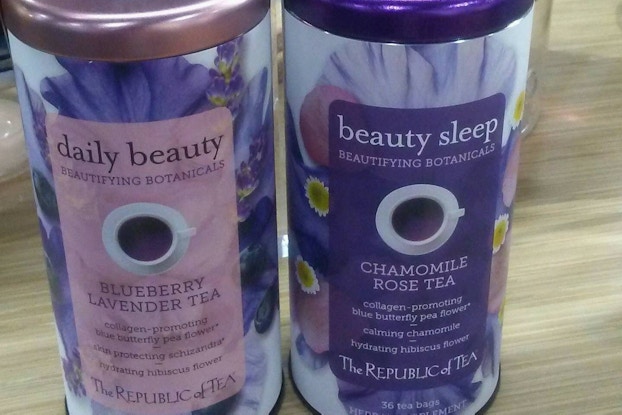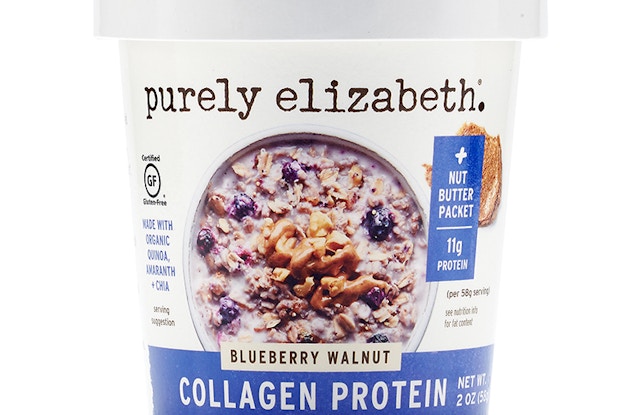
The movement among consumers to eat more natural, organic and cleaner foods that help promote better health and wellness is morphing into a new fast-growing trend: the convergence of food and beauty.
As a result, two concurrent developments are taking center stage in the consumer-packaged goods industry — edible beauty, functional food and drink products specifically designed for cosmetic purposes, and the use of food ingredients as the sole or primary ingredient in beauty care products.
Edible beauty
Jack Li, managing director of Chicago-based food and beverage insights agency Datassential and a leading trend spotter in the food industry, has named the convergence of food and beauty as one of his five top consumer packaged goods trends for 2019 and beyond.
“Just as consumers want natural foods, they want natural beauty products. Increasingly that means plant-based health and beauty care products,” Li said in his keynote presentation at the May 2019 Food Innovation Summit held by Niagara University’s Food Marketing Center of Excellence.
Retail store shelves and online sites are booming with products reflecting the collision of food and beauty, Li said.
For example, “Activated charcoal is being used as a functional beauty ingredient and sold as a detox drink.” It’s also used in toothpastes, skin sponges, face masks and skin creams, he said.
Additionally, Li said, “Numerous companies are including collagen in protein bars, and you can even get it in your Jamba Juice.”
HUM Nutrition, which has as its tagline, “Beauty starts from within,” is a leader in the edible beauty category, offering an extensive selection of consumable health and beauty products, which it sells online direct to consumers and in retail stores, including Sephora. The company is staffed with numerous registered nutritionists and dietitians who help develop and formulate its products.

Food and drink products that promote skin, hair and nail health are often referred to as nutricosmetics, which is becoming one of the hottest new buzzwords in the consumer packaged goods business.
Functional food and drink items promoting skin health are particularly abuzz, with collagen the primary nutricosmetic ingredient used in these branded products, such as the new Kalumi BEAUTYfood Collagen Protein Bar which targets women with a dual message of improved skin health and the promotion of satiety and weight management by including yacon syrup, an ingredient high in fiber in the female-focused protein bar.
According to research firm Innova Market Insights, food and beverage products positioned towards skin health have seen 15% average growth from the introduction of the first handful of these products in 2014 to 2018. Product introductions in the edible beauty category have soared since 2018, according to the research firm.
It’s all about obtaining beauty from within. Health and wellness — how we feel, how we live, how we look — are becoming one.Eric J. Pierce, vice president of business insights for New Hope Network’s NEXT
Think Big
Several startups have begun to capitalize on the edible beauty movement, realizing the convergence of two major consumer interests. Read more on business opportunities that are poised for growth.
The collagen craze
Collagen-infused edible food and drink items were one of the biggest trends on display at the winter and summer Fancy Food shows this year. Collagen is noted for, among other things, its functional to promote improved skin health.
Among the numerous products featuring collagen introduced included Coco Luxe, a line of functional coconut waters in a pastel package designed to get the attention of women; Garden of Flavor Energy Elixirs, which includes an aloe and collagen flavor; Republic of Tea Daily Beauty and Beauty Sleep Tea; Glow collagen-infused water; Purely Elizabeth Collagen Protein Oats; and Radiant Beauty, a nondairy frozen dessert that contains “gold caviar collagen.” The dessert includes actual caviar.
But buyer beware: Unlike with food and beverage products meant for nutritional consumption, the Food and Drug Administration doesn’t currently regulate claims made by edible beauty-focused branded products.
Katherine Harvey, founder and CEO of Bare Bones Broth, said collagen is hot.
Bone Broth, the company’s original product, is a good source of collagen and was one of the first food and drink products consumers started adopting for skin health, along with its other benefits, such as improving gut and joint health. This development led Bare Bones Broth to launch a line of 100% grass-fed bovine hide collagen peptide mixes last year. The versatile product can be mixed with water, coffee, tea, juice or any other hot or cold beverage, as well as added into soups, sauces, oatmeal and any sweet or savory food recipe, she said.
“Collagen is about healing your body from the inside out, which includes strengthening bones and muscles, smoothing wrinkles and revitalizing brittle hair and nails,” Harvey said.
The bone broth entrepreneur said she sees the edible beauty category as part of the overall wellness movement. There is a growing desire, particularly among millennials, to achieve beauty from within, which is what in large part is driving the convergence of food and beauty, she told CO—.
Collagen is the current functional ingredient of choice, but research firm Innova Market Insights says others are emerging fast too, including turmeric, which has seen 57% annual growth as a functional ingredient in food and drink products targeting skin, hair, nail health and beauty. B vitamins are another functional beauty ingredient on the move. According to Innova, between 2014 and 2018, skin, nail and hair health-focused food and beverages containing vitamin B3 and niacin, and vitamin B7 and biotin, experienced 9% and 25% average annual growth, respectively. The research firm says opportunities will only grow for nutricosmetic ingredients, as marketers continue to leverage the convenience and appeal of beauty foods.

‘Kitchen beauty’ and ‘foodie skin care’
The convergence of food and beauty is also resulting in the booming use of food ingredients— everything from celery, cucumbers, moringa, avocado, broccoli, kale and spinach, to green tea, orange rind, chamomile and turmeric — in traditional topical cosmetics. The store cosmetic section is increasingly resembling the supermarket produce department today.
What research firm Mintel calls “kitchen beauty” and alternatively “foodie skin care” has grown into one of the cosmetic industry’s biggest new trends.
According to Mintel analyst David Tyrell, “Attitudinal changes toward natural ingredients have acted as a catalyst in the rise of kitchen beauty — products that can be or look like they have been made at the kitchen table. It’s about providing products with recognizable ingredients, supposedly made using processes you could replicate at home,” Tyrell said in a recent research report.
“Food ingredients function as a natural remedy in the minds of many consumers,” he said in the report. “Common foods as ingredients help the shopper feel better about unfamiliar components they can’t see or don’t understand.”

The rise of kitchen beauty and foodie skin care mirrors the clean label trend in the food industry, which has been gaining accelerated momentum over the past decade. It finds food and drink companies reformulating their products by replacing artificial ingredients with more natural and everyday ingredients.
Research firm Ecovia Intelligence has found that “clean label” has moved from the food industry into the cosmetics industry. Indeed, terms like organic, non-GMO, vegan and gluten-free have carried over into cosmetics, with some companies even claiming their beauty products are “good enough to eat,” according to the firm’s findings.
Eric J. Pierce, vice president of business insights for New Hope Network’s NEXT data and insights team and an expert in the evolution of the clean-label phenomenon in the natural products industry, agrees that the movement has extended from the food sector to the cosmetics industry.
“Diet in general, what we eat and drink, along with it being an important way to improve how we look and feel, is going to become an even bigger dialogue among consumers than it already is,” Pierce said. “It’s all about obtaining beauty from within. Health and wellness — how we feel, how we live, how we look — are becoming one.”
CO— aims to bring you inspiration from leading respected experts. However, before making any business decision, you should consult a professional who can advise you based on your individual situation.
CO—is committed to helping you start, run and grow your small business. Learn more about the benefits of small business membership in the U.S. Chamber of Commerce, here.







